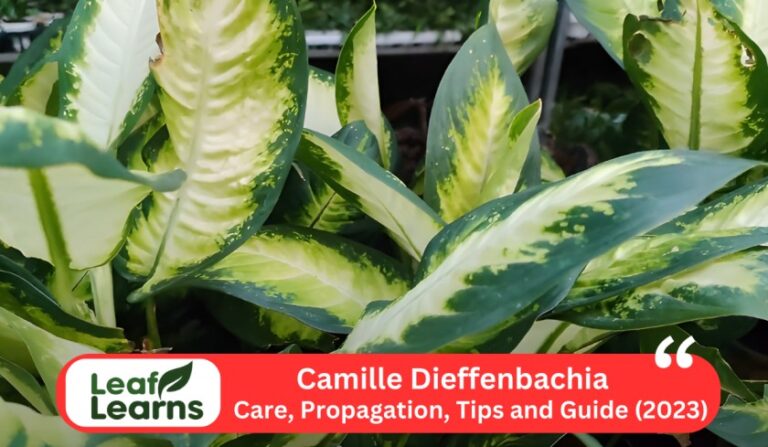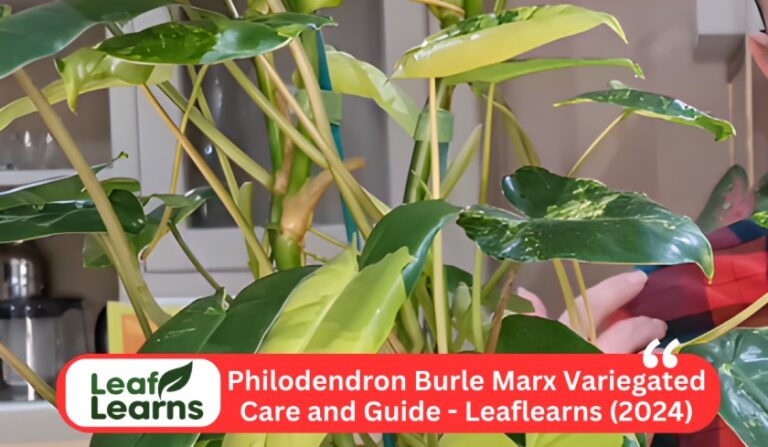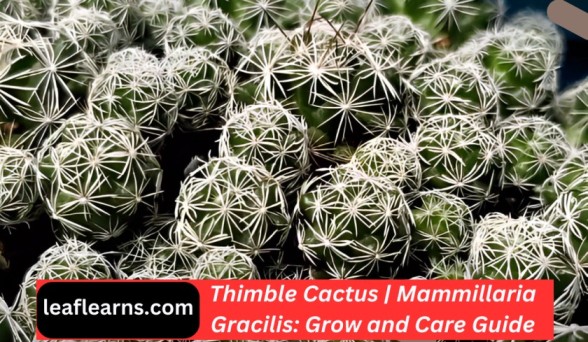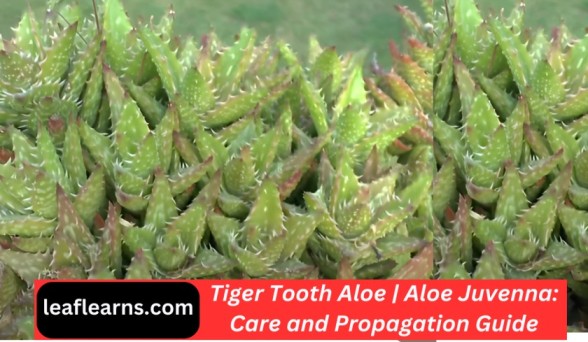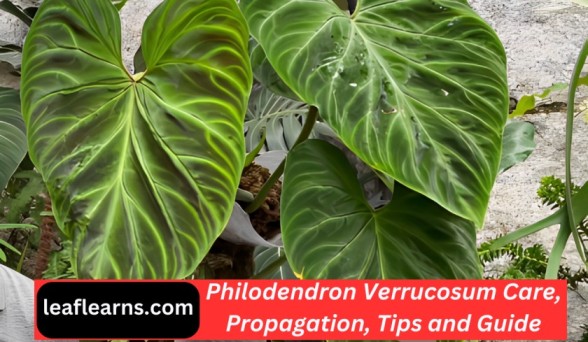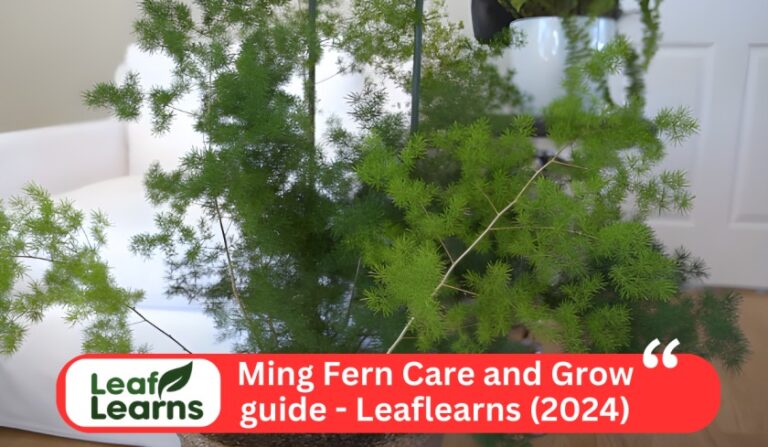Philodendron McDowell (2024)
Philodendron McDowell stands as an exquisite hybrid, resulting from the crossing of P. pastazanum and P. gloriosum, showcasing lush, heart-shaped leaves adorned with striking white veins against a deep green backdrop. Having a compact structure, this type of plant is usually between 2 and 3 feet tall which is why it is convenient to grow it indoors and outdoors.
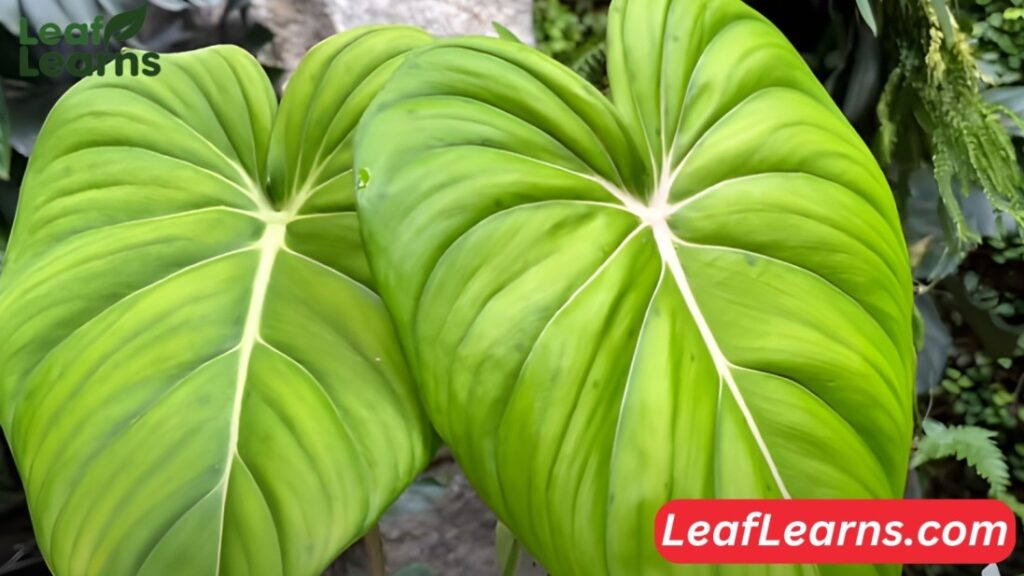
The plant’s foliage is, in effect, incredibly velvety and veiny, rendering it as the most attractive type among various Philodendron species.This plant can be grown in the bright indirect light indoors or under sheltered shade outdoors.
| Feature | Description |
| Common Name | McDowell’s Philodendron, Pillow-leaf Philodendron |
| Scientific Name | Not Officially Classified (Hybrid) |
| Family | Araceae (Aroids) |
| Origin | Likely Man-made Hybrid |
| Size | Up to 3 feet tall |
| Lifespan | Many years with proper care |
| Leaf size | Up to 12 inches long, heart-shaped, deep green with prominent white veins |
| Flower | Insignificant, rarely blooms indoors |
| Light | Medium to bright, indirect light |
| Water | Allow soil to dry slightly between waterings |
| Soil | Well-draining, aerated mix with orchid bark, peat moss, perlite, and charcoal |
| Temperature | Warm temperatures, ideally 65°F to 80°F |
| Humidity | Prefers high humidity |
| Fertilizer | Balanced fertilizer monthly during growing season (spring/summer) |
| Propagation | Stem cuttings |
| Pests | Mealybugs, spider mites |
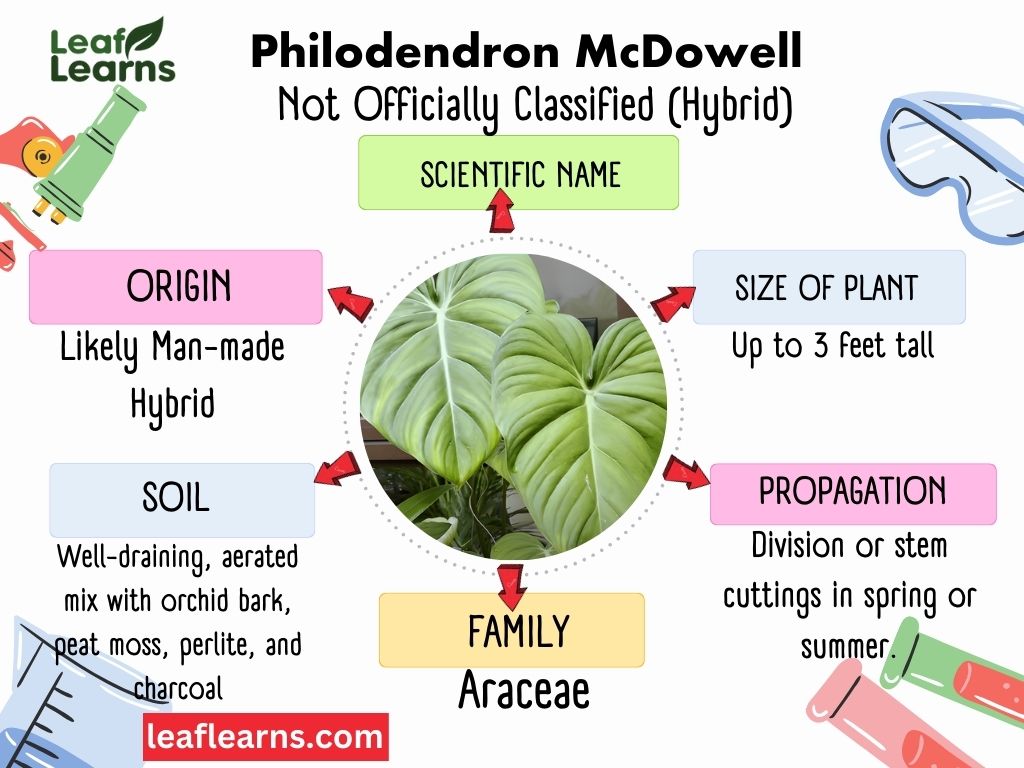
Contents
- 1 Philodendron McDowell Care
- 2 How often do you water Philodendron-McDowell?
- 3 Philodendron McDowell Propagation
- 4 Pruning
- 5 Growth Rate and Size
- 6 philodendron mcdowell climber or crawler
- 7 Common Pests and Diseases
- 8 Understanding the Care and Characteristics of Philodendron-McDowell
- 9 Importance of Propagation Techniques and Market Dynamics
- 10 FAQs
- 10.1 Is Philodendron McDowell rare?
- 10.2 What is a Philodendron McDowell?
- 10.3 Is Philodendron McDowell a climber?
- 10.4 What is the difference between Philodendron Gloriosum and McDowell?
- 10.5 Is Philodendron McDowell a hybrid?
- 10.6 How do I identify a Philodendron McDowell?
- 10.7 What kind of soil does a Philodendron McDowell need?
- 10.8 How do you propagate a Philodendron McDowell?
Philodendron McDowell Care
How much light does a Philodendron McDowell need?
You know Philodendrons are famous for their shade-high tolerance, the McDowell best grow in bright, indirect light.
And placed this type of plant near the east or north-facing window due to full sunlight over the day.
But keep in mind that your plant will be destroyed if you can be placed in direct sunlight and it makes your leaves damaged. Avoid harsh, direct sun, as this can scorch the leaves.
How often do you water Philodendron-McDowell?
These philodendron plants don’t like soggy roots but it need to grow when the top inch of soil dries fully before watering again.
Also, overwatering and underwatering can cause root rot which can damage the plant.
What type of soil is best for Philodendron McDowell?
This plant can be grown in the well-draining, aerated potting mix which is very necessary for its growth.
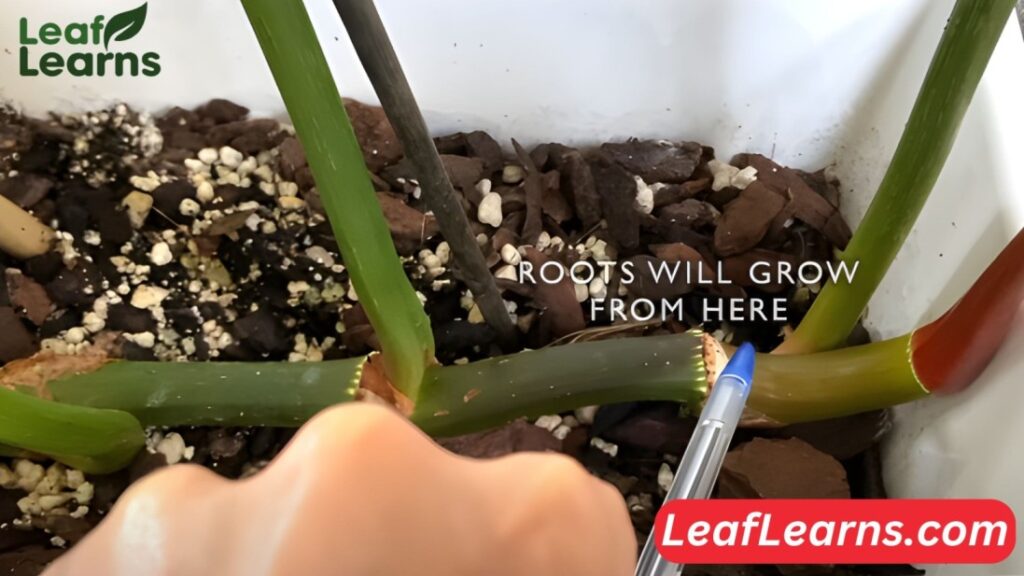
And if you want better results then you can also use the blend specifically formulated for aroids, or make it on your own using a combination of peat moss, perlite, orchid bark, and charcoal.
This formula makes goods drainage and air circulation for the root development.
Temperature Requirement
McDowell’s like the warm environment. This plant can be grown between 65°F and 80°F (18-27°C).
Be sure to avoid sudden temperature changes like a cold environment which can cause stress in your plant.
Do Philodendron-McDowell like humidity?
These Philodendrons are normally grown in high-humidity environments.
Considering the average humidity may suffice, but using a humidifier or putting your plant in the pebble tray which is filled with water and this cause to increase the humidity by increasing the moisture level.
How often should I fertilize my McDowell Philodendron plant?
When the spring and summer seasons come give your Philodendron with a balanced, water-soluble fertilizer in a month.
Make the moisture according to the manufacturer’s instructions by avoiding the fertilizer burn.
Potting Requirement
You can prevent waterlogging by using the pot with drainage. Please choose the large pot due to better growth of roots. But do not use the more larger pot that places the moisture in your pot.
Philodendron McDowell Propagation
These plant can be easily multiplied through propagation. Here are two easy methods to create new plants from your parent plant:
Stem Cuttings in Water
- Preparation: Select a healthy stem but remember that this stem contains leaf and visible nodes. But please use the sterilized pruning shears to make a clean cut below the node.
- Water Propagation: select the cutting stem and put in the clean room temperature water that is already present in the glass.Be sure the nodes are submerged but not in the leaf.
- Potting Up: when your plant root goes 1-2 inches long so it mean it is ready for potting. Please select well drainage having the soil which is more suitable for your plant.and place your plant in which soil where nodes are buried below the surface of earth.
Sphagnum Moss Propagation
- Preparation: Similar to the water method, select a healthy stem cutting with a healthy node.
- Moist Sphagnum Moss: Moisten the sphagnum moss and wrap it round the node at the base of the stem cutting. Cling the moss to the tree using a small plastic wrap or a twist tie, so that it keeps a humid atmosphere around it..
- Monitoring and Care: Put the wrapped cutting in the warm place in the indirect sunlight.Check on the moss regularly, ensuring it stays damp but not soggy.
- Root Growth: In the moss surrounding the node, roots ought to grow. After the cutting has developed roots, take off the plastic wrap and plant it in an appropriate container with soil that drains well.
Pruning
Regular pruning isn’t necessary for a healthy Philodendron. But if you can prune regularly it causes increased bushier growth and controls leggy vines.
By pruning you can use sterilized shears to remove brown-black damaged or unwanted leaves at the base of the petiole.
Growth Rate and Size
This Philodendron can be grown at a moderate rate, it can grow up to 3 feet tall indoors. And it can flourish for many years by proper caring.
philodendron mcdowell climber or crawler
This plant is not a climber and they grow creeping along the ground surface.
Common Pests and Diseases
These plants are pest resistant and it can attract mealybugs and spider mites. Check regularly of these tiny invaders. If you want to treat these insects then you can use the neem oil or insecticidal soap.
Is Philodendron McDowell toxic to cats and pets?
Philodendron McDowell is toxic to cats and pets. It is composed of calcium oxalate crystals.
And if your cats ingest these crystals it can destroy your pets mouth, throat and stomach for both pests and humans. The mouth, throat, and stomach of pets and humans. Keep this plant out of reach of curious animals and children.
Toxicity for Human
Philodendron McDowell is mildly toxic to humans. If ingested it can cause mouth irritation, swelling and digestive discomfort.
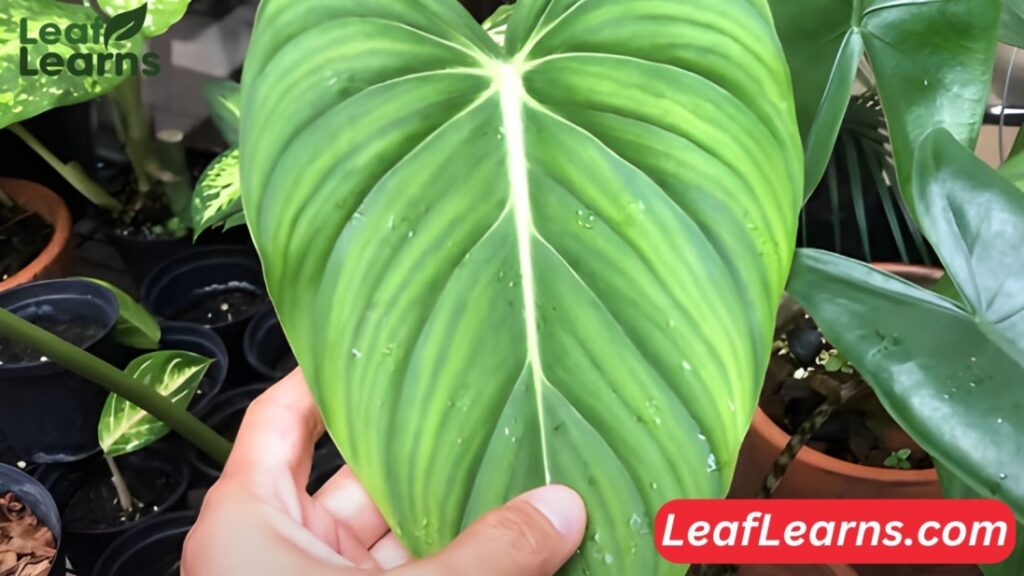
Understanding the Care and Characteristics of Philodendron-McDowell
When considering the care and characteristics of Philodendron-McDowell, it’s essential to understand its specific needs. Each aspect contributes to its growth rate and overall health, from soil composition to light requirements.
Whether one is purchasing Philodendron-McDowell or already nurturing it, ensuring the right conditions, such as well-draining soil and adequate sunlight, is paramount. Varieties like the variegated and white Philodendron-McDowell offer unique aesthetics, adding vibrancy to any space.
Questions about its growth pattern, such as whether it climbs or crawls, are common, highlighting the importance of understanding its specific behavior for proper care and maintenance.
Importance of Propagation Techniques and Market Dynamics
Propagation techniques are crucial for expanding one’s Philodendron-McDowell collection or sharing its beauty with others. Knowing how to propagate Philodendron-McDowell and related varieties like Philodendron hope or mican allows enthusiasts to nurture new plants from existing ones, fostering growth and sustainability within the community.
Comparisons with other Philodendron species like pastazanum or gloriosum offer insights into their differences and similarities, aiding enthusiasts in selecting the ideal plants for their collections.
Whether it’s purchasing from reputable sellers or exploring options in different regions like Canada, OLX, NZ, or the UK, understanding the market dynamics ensures a seamless buying experience, supporting both sellers and buyers in their botanical endeavors.
FAQs
Is Philodendron McDowell rare?
While not as abundant as some other philodendrons, Philodendron’s McDowell is still somewhat uncommon. Online vendors and specialty plant stores carry it.
What is a Philodendron McDowell?
The gorgeous hybrid Philodendron’s McDowell Philodendron is highly valued for its heart-shaped, smooth, deep green leaves with noticeable white veins. It’s a developing slowly houseplant that is somewhat small.
Is Philodendron McDowell a climber?
No, this plant is not a climber plant. It’s a terrestrial Philodendron, meaning it grows low to the ground and spreads horizontally.
What is the difference between Philodendron Gloriosum and McDowell?
Both plants are beautiful Philodendrons with large, heart-shaped leaves. While McDowell features a velvety texture and doesn’t climb, Philodendron Gloriosum has slightly wavy leaves and a more noticeable gloss.
Is Philodendron McDowell a hybrid?
Yes, this plant is a man-made hybrid, likely a cross between Philodendron Pastazanum and Philodendron Gloriosum.
How do I identify a Philodendron McDowell?
The essential characteristics are heart-shaped, velvety, deep green leaves with noticeable white veins. Compared to climbing philodendrons, it has a bushier growth habit and is incapable of climbing.
What kind of soil does a Philodendron McDowell need?
This plant grow in well-draining, aerated soil. A mix soil having orchid bark, peat moss, perlite, and charcoal.
How do you propagate a Philodendron McDowell?
Transplant this plant using cuttings from the stem. For effective propagation, choose a good stem portion with a few nodes, plant it in a well-draining medium, and keep the humidity high.

